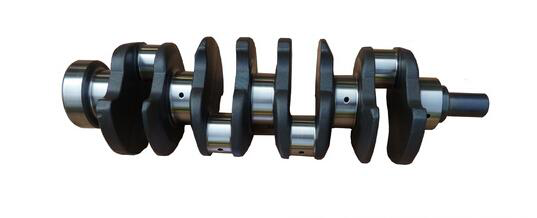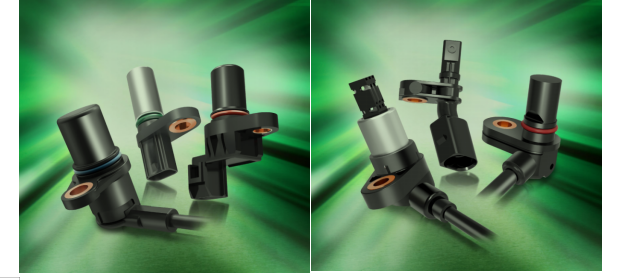- The difference between crankshaft position sensor and camshaft position sensor
The crankshaft position sensor is used to detect the engine speed, crankshaft position (rotation angle) signal and the first cylinder and the top dead center signal of the compression stroke of each cylinder. It is the main signal to control the injection and ignition timing. Like the air flow sensor, it is the main sensor in the engine centralized control system. In the computer-controlled electronic ignition system, the engine crankshaft angle signal is used to calculate the specific ignition timing, and the speed signal is used to calculate and read the basic ignition advance angle.
The camshaft position sensor is also called a phase sensor and a synchronization signal sensor. Its function is to detect the rotation angle position signal of the camshaft. The ECU uses this to determine the top dead center position of a cylinder piston, which is an important signal for controlling fuel injection and ignition timing.
When the crankshaft rotates to a specific position, the camshaft position sensor inputs a valve camshaft position signal to the ECU to determine whether the piston starting to move to the top dead center at this time is in the compression stroke or the exhaust stroke, so that the ECU can identify the piston Compress the top dead center to perform sequential injection control, ignition control and knock control. In addition, the camshaft position signal is also used to identify the moment of the first ignition when the engine is started. Because the camshaft position sensor can identify which cylinder piston is about to reach the top dead center, it is also called the cylinder judgement sensor.
In a considerable part of automobiles, the crankshaft position sensor and the camshaft position sensor are made in one body, collectively referred to as the crankshaft/camshaft position sensor.

- The role of crankshaft position sensor and camshaft position sensor
Role in engine computer work:
The English abbreviation of the crankshaft position sensor is CKPS or CKP, also known as the engine speed sensor. Most of the magnetic induction sensors are used to match the target wheel with 60 teeth minus 3 teeth or 60 teeth minus 2 teeth. The English abbreviation CMPS or CMP of the camshaft position sensor is also called a Hall sensor. Most of the Hall sensors are used to cooperate with a signal rotor with a gap or several unequal gaps. The control unit continuously receives and compares the two signal voltages. When both signals are at low potential, the control unit thinks that the top dead center of the compression stroke of the cylinder can be reached after a certain crankshaft angle at this time. If CKP and CMP are both at low potential after comparison, the control unit has a benchmark for ignition timing and fuel injection timing.
When the camshaft position sensor signal is interrupted, the control unit receives the crankshaft position signal and can only recognize that the top dead center of cylinders 1 and 4 is reached after a certain crankshaft angle, but it is not known which of cylinders 1 and 4 is on the compression stroke. Stop point. The control unit can still inject fuel, but instead of sequential injection to simultaneous injection, the control unit can still ignite, but the ignition timing is delayed to a safe angle without knocking, generally delayed by 1 to 5. At this time, the engine power and torque will be reduced, and the driving feeling is that the acceleration is not good, the specified high speed is not reached, the fuel consumption is increased, and the idling speed is unstable.
When the crankshaft position sensor signal is interrupted, most vehicles cannot start because the program does not design a function that uses the camshaft sensor signal to replace it. However, a small number of vehicles, when the crankshaft position sensor signal is interrupted, the control unit will replace it with the camshaft position sensor signal, and the engine can start and run, but the performance will be reduced.
- Crankshaft and camshaft position sensor who is the protagonist
The camshaft position sensor (Camshaft Position Sensor, CPS) is also called the cylinder identification sensor (Cylinder Identification Sensor, CIS). In order to distinguish it from the crankshaft position sensor (CPS), the camshaft position sensor is generally represented by CIS. The function of the camshaft position sensor is to collect the position signal of the valve camshaft and input it into the ECU so that the ECU can identify the top dead center of perform sequential fuel injection control, ignition timing control and deflationary control. In addition, the camshaft position signal is also used to identify the moment of the first ignition when the engine is started. Because the camshaft position sensor can identify which cylinder piston is about to reach the top dead center, it is called a cylinder identification sensor.
The camshaft position sensor uses a Hall sensor. When the sensor fails and the signal is interrupted, the engine will continue to run and start again. However, the fuel injection is not completed when the intake valve is opened, but is completed before the intake valve is closed (that is, the fuel injection time is increased), which has minimal impact on the quality of the mixture and will not affect the overall performance of the engine. At the same time, since the control unit cannot determine which cylinder is about to reach compression top dead center, the knock adjustment will stop. In order to prevent the engine from knocking, the control unit will automatically reduce the ignition advance angle.
In fact, what the camshaft position sensor provides to the ECU is only a cylinder judgment signal as a timing reference, that is, a certain angle before the top dead center (different with the model). The ECU performs angle counting to sense the position of the piston based on the square wave signal provided by the crankshaft position sensor, and then compares the engine working map in the storage disk with the data provided by various sensors to perform the ignition advance angle, fuel injection timing, and injection timing, Oil control.


 中文
中文 English
English Español
Español Français
Français